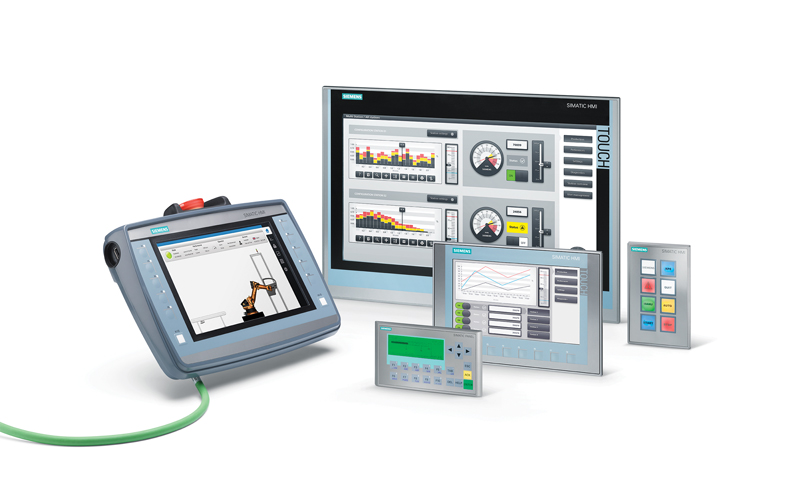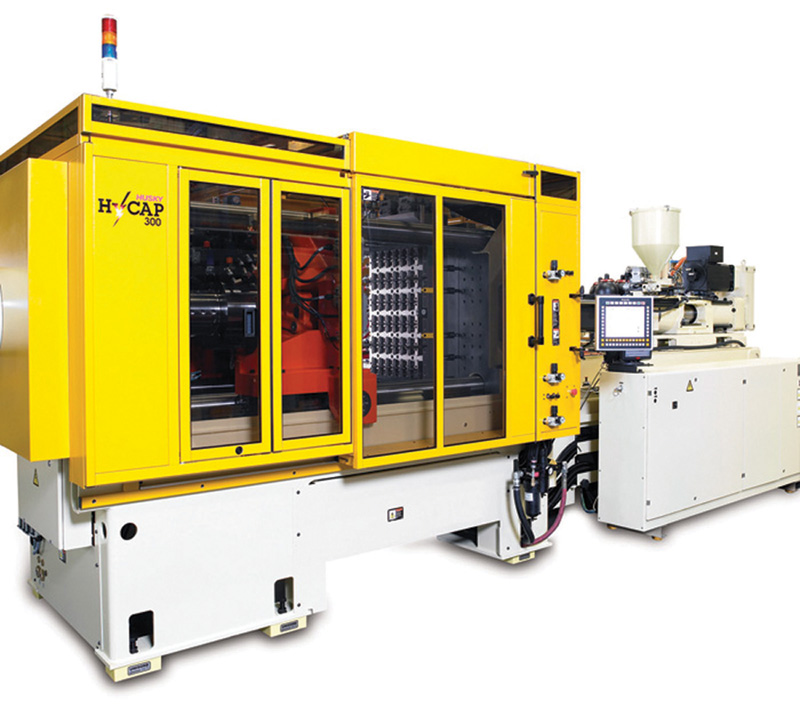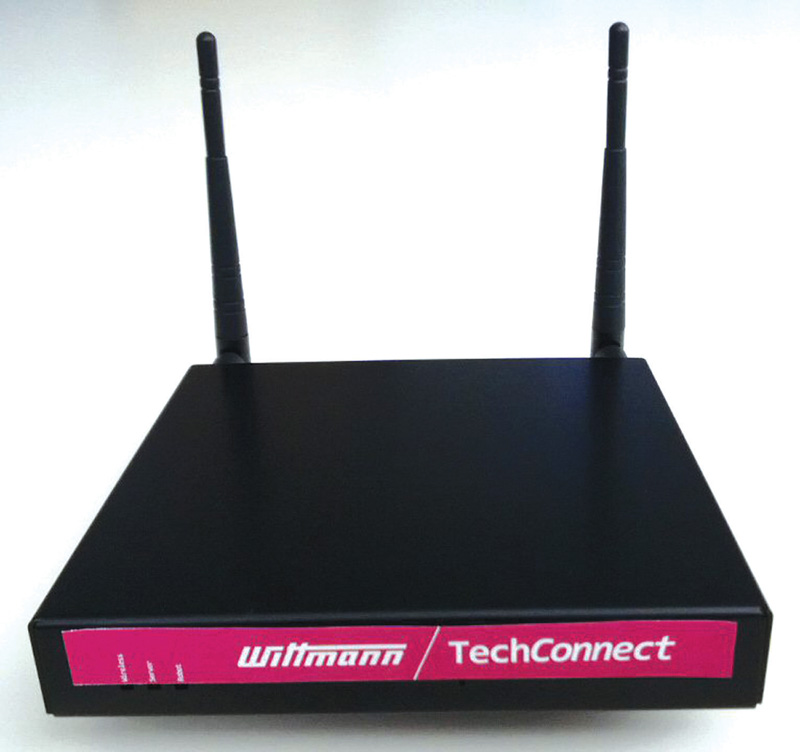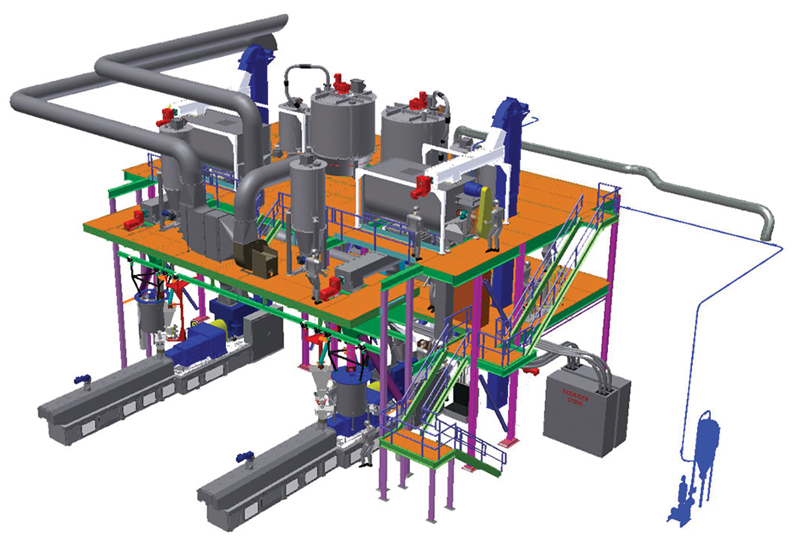Good Connections
Processors and equipment suppliers are exploiting the productivity benefits of web-based diagnostics
Previous Article Next Article
By Pat Toensmeier
Good Connections
Processors and equipment suppliers are exploiting the productivity benefits of web-based diagnostics
Previous Article Next Article
By Pat Toensmeier
Good Connections
Processors and equipment suppliers are exploiting the productivity benefits of web-based diagnostics
Previous Article Next Article
By Pat Toensmeier

Siemens controllers, with the human-machine interface shown here, allow web-based access for remote diagnostics (image courtesy of Siemens).

Siemens controllers, with the human-machine interface shown here, allow web-based access for remote diagnostics (image courtesy of Siemens).

The Shotscope system’s Internet cable plugs into controllers on Husky machines. For other injection machines, the webbased diagnostics system can be used with an Ethernet connection or data-acquisition module (photo courtesy of Husky Injection Molding Systems).

The Shotscope system’s Internet cable plugs into controllers on Husky machines. For other injection machines, the webbased diagnostics system can be used with an Ethernet connection or data-acquisition module (photo courtesy of Husky Injection Molding Systems).

Wittmann Battenfeld remotely services its robots with TechConnect, which uses a WiFi connection.
Remote Controls
Providing remote diagnostics is also a focus of controls manufacturers such as Allen-Bradley, Siemens, and others. The global nature of machine sales intensifies the need for such a capability.
“What happens when there is an issue with a machine… and the OEM is in the U.S. and the machine is in Singapore, and no help can be sent [for] three days?” asks Mathias Radziwill, a business development specialist at Siemens Industry Inc.
The answer for Siemens (and others) is controllers that allow immediate, secure, and, in many cases, customizable web-based access for remote diagnostics by an OEM’s technicians. Radziwill notes that all Siemens controllers are configured for web access and need no further devices to achieve it.


Entek supplies various remote diagnostic options for keeping tabs on the extruders—and peripherals—in its turnkey extrusion systems (image courtesy of Entek Extruders).

Entek supplies various remote diagnostic options for keeping tabs on the extruders—and peripherals—in its turnkey extrusion systems (image courtesy of Entek Extruders).
Web-based process troubleshooting is the latest stage in the evolution of machine diagnostics, and the most effective. The ability to monitor operations 24/7 via the Internet, whether on site or remotely, significantly improves process quality, productivity, and profitability.
The capability has other advantages. For one, it offsets challenges that arise from lean operations and the “skills gap”—notably the presence of fewer process engineers. In such operations, where only one person may be responsible for multiple machines and even multiple plant locations, web-based troubleshooting reduces “wear and tear” on specialists by transmitting real-time data to their desks or mobile devices. In most cases this allows them to detect problems and correct them without repeated trips to the floor or other plants.
Equipment OEMs, in turn, reduce the amount of travel by their specialists when they use web-based troubleshooting to monitor the performance of their machines at customers’ plants. Many times problems can be detected and fixed remotely without dispatching a technician. When a major problem is discovered, spare parts can be ordered to arrive when a technician does, thus reducing machine downtime.
Automatic Synergies
Web-based troubleshooting also facilitates process automation. Here, it’s an extension of existing diagnostic and control capabilities.
As more processors invest in high-speed, high-capacity Internet systems for these and other uses, they create infrastructures within plants that accommodate the latest web-based diagnostics. The more processing power and capacity an industrial Internet has, the more diagnostic data it can monitor and record. The synergies between web-based troubleshooting and plant automation continue to increase as processors add or expand automated systems.
Plant-wide automation has been seen as a costly investment by many molders and extruders. However, recent developments in the affordability of automated equipment—along with a keener understanding of the impact that automation has on facilitating lean operations and profitability, and its relatively fast return on investment (ROI)—increasingly justify broad automation in medium and small operations.
This point was evident at last year’s International Manufacturing Technology Show in Chicago, Illinois, and will doubtless be a highlight at the upcoming NPE in March.
Supplier Examples
There are relatively few suppliers of web-based troubleshooting systems; the market is still in growth mode. Some suppliers are independents that include plastics among their markets, while others are primary and auxiliary equipment OEMs with their own products.
Importantly, the equipment doesn’t have to be expensive. Basic systems require little more than an Ethernet connection or WiFi terminal. Processors can thus find versions configurable for their needs, as the following examples show.
Remote troubleshooting
One advanced web-based troubleshooting system is Shotscope NX from Husky Injection Molding Systems. The Windows-based system monitors injection machines (Husky’s and other suppliers) and auxiliaries and collects process data and production information from multiple machines in one or more locations anywhere in the world, says Curt Norby, Shotscope NX product manager. There is no “practical limit” to the number of machines and locations that can be connected, he adds.
“Shotscope brings all information to one database,” Norby explains. “Users see the effectiveness of their machines and can take immediate action if they detect problems.”
On Husky machines, Shotscope’s Internet cable plugs into the controller and collects up to 250 process variables, all user-defined. This means a molder monitors as many variables as he or she needs—it doesn’t have to be all 250.
A recent addition to Shotscope is an Energy Monitoring Module that tracks consumption and aids in reducing energy use, and thus manufacturing cost. Other modules include preventive maintenance scheduling and messaging, which transmits an email or phone text alert that a machine is running off-spec or is down.
Machines from other OEMs with Ethernet connections are usually compatible with Shotscope, the company says. Husky also retrofits machines with data-acquisition modules that interface with the system. Process data are represented graphically (e.g., statistical charts, floor layout, machine overview) or textually. Machine overviews are simple, yet effective. A machine operating properly is depicted in green, one running off-spec is yellow, and a machine that’s down is red.
The Shotscope NX system is designed to increase machine uptime, along with production quality. It can be extended to monitor auxiliary equipment and even secondary operations such as finishing, Norby says.
A processor can also use data from the system to sign off on a machine before it leaves the Husky plant in Canada for delivery. Norby says a few buyers in Europe and Asia have done this, eliminating the need to send their people to Canada for the procedure. Husky engineers also use Shotscope data from beta tests of new models to refine engineering features without leaving their offices.
Shotscope is “moderately expensive,” Norby says, but “provides a significant value to customers” and has a “fast ROI.” Most users want ROI of one year or less, and Shotscope often falls within this period.
Reducing downtime
Another supplier offering web-based diagnostics for its injection machines, material handling equipment, and robots is Wittmann Battenfeld. The diagnostic offerings in these areas are primarily to reduce downtime and mean time to failure, notes Sonny Morneault, national sales manager.
“These tools allow us to troubleshoot in minutes,” he says, eliminating delays and downtime inherent in conventional telephone support and technician dispatch services. “With today’s software-intensive equipment, many issues are resolved via web sessions, and dispatching a technician is rarely needed.”
The company’s Web Service aids in quick and cost-effective servicing of machines (including spare part deliveries), as well as failure diagnosis and setup assistance, all via remote operation. Web Service uses a commercial program from Cisco WebEx for secure web and video conferencing.
“Due to the ever increasing control functions in our machinery, on-site servicing is reduced to a minimum,” Morneault says. There is, moreover, no cost for the service, which is available on Unilog B6-control injection machines, as well as robots with the company’s R8 control and material handling systems with the M7.2 control.
For Wittmann Battenfeld robots there is TechConnect, which uses a secure wireless Internet connection to interface with units. A company technician performs the functions required to adjust or troubleshoot a robot once a connection is made.
With TechConnect, the technician accesses the robot’s VNC (virtual network computing) center, which opens for view the teach pendant screens, I/O signals, error buffer, and alarms. Tapping into the robot’s oscilloscope provides visual access to axis movements and torque, electrical current, and velocity data. TechConnect also optimizes robot cycle times, work cell performance, software capabilities, and program reviews.
The company’s central material handling system has a VNC license that permits remote access to the equipment’s M7.2 control. This lets Wittmann Battenfeld technicians troubleshoot the system, Morneault says, along with equipment connected to it, such as loaders, pumps, dryers, hoppers, RFID coupling stations, and error and command logs.
Meanwhile, the company is readying a new app called QuickLook that connects users to Unilog B6 injection machines and R8 robots for overviews of operating data. Designed for Apple and Android operating systems, QuickLook’s features include overviews of operating modes, displays of operating data, alarms and user-defined program values, and running setups of select equipment through their IP addresses.
All of these diagnostic capabilities, Morneault advises, are about productivity. “Our clients don’t have enough technicians and need our help for functions that have historically been done by their staff. Anything we can do to increase their productivity and reduce downtime makes them happy.”
Extruders too
Extruder suppliers are also involved in web-based diagnostics. Entek Extruders, whose specialties include twin-screw turnkey systems, provides equipment options that let the company troubleshoot machines and components remotely.
“Our capabilities have evolved with computer technology,” says Al Bailey, East Coast controls manager. “Data and speed are keys. As these increase, we can do more for customers.”
The web-based diagnostics that Entek supplies are not for the real-time monitoring of systems (the company will configure controls for this, if requested). Instead, they are mostly to check operating conditions of extruders and auxiliaries, usually after notification of a problem by a customer.
Entek technicians access the extruder’s human-machine interface (HMI), which the company designed and programmed, and grab historical data to detect problems. “We access the data, check process variables, and identify the problem,” Bailey says.
A typical troubleshooting checklist involves inspecting data from the machine’s PLC, variable frequency drives, feeder controller, temperature control, pelletizer, and other components. “If the problem is with a feeder, we tell the customer, who can usually fix it.” It could be, he notes, something as simple as a bit of a resin bag getting caught in the mechanism and slowing the feed rate—hardly a reason to dispatch a technician or pull a system offline.
All of Entek’s technicians have laptops to check inquiries even when on the road, notes John Effmann, sales and marketing director. The goal, he adds, is to “quickly troubleshoot and fix something.” Based on the data that Entek examines, “we can help identify the problem and get a machine up and running quickly.” The goal, as always, is minimal downtime.
When Entek designs a turnkey system, it recommends diagnostic controls to customers and lets them determine how basic or complex they should be. Entek uses off-the-shelf components such as Allen-Bradley controls and drives, and all the equipment it specifies, including auxiliaries from companies like Gala and Brabender, are Ethernet capable. Entek does include the HMI, which is configured for remote access, and a high-end VPN (virtual private network) router to maintain security when transmitting or receiving data.
Bailey believes the companies that benefit most from Entek’s remote diagnostic services are smaller processors running lean operations with few process engineers.
Bright Horizons
The outlook for web-based process troubleshooting is bright. By all accounts, the market, which has been around for less than a decade, is small and primed for growth. As the benefits of this capability become widely understood, more processors—and their equipment suppliers—will embrace it as a necessary investment.